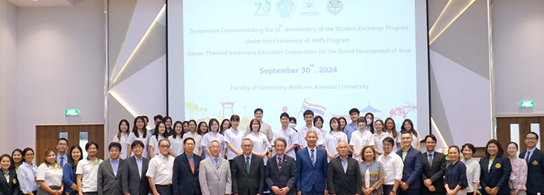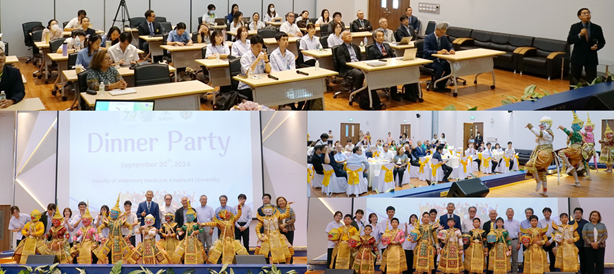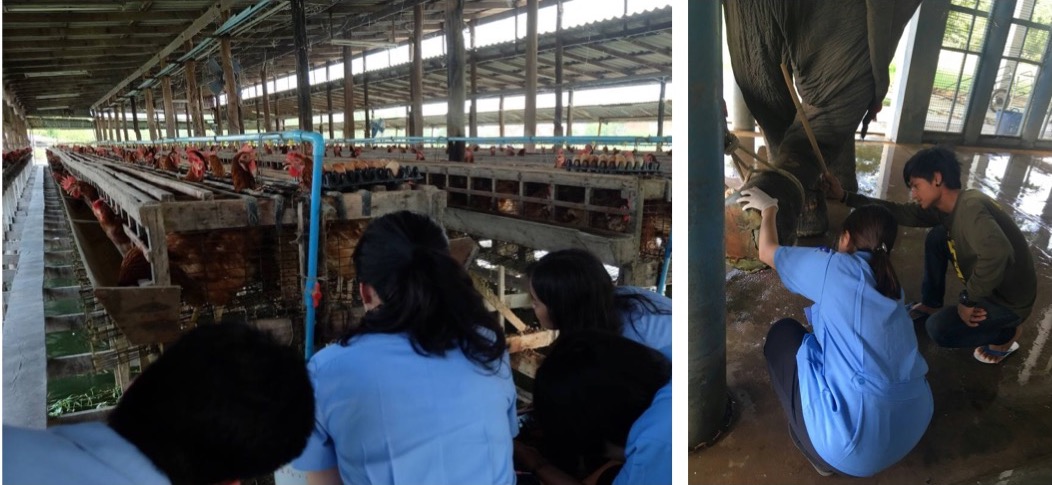International Vet Exchange Program (IVEP) - Kasetsart University -
- Report
Kasetsart University
Symposium Commemorating the 10th Anniversary of the Student Exchange Program under the framework of AIMS program
(Japan-Thailand Veterinary Education Cooperation: for the Sound Development of Asia)

The AIMS program, launched in 2013 with the aim of promoting cooperation in veterinary education between Japan and Thailand, has sent a total of 97 students from three Japanese universities (Hokkaido University, Rakuno Gakuen University, and University of Tokyo) to Thailand and 93 students from Kasetsart University to Japan during the five-year project.
The exchange continued even after the financial support of AIMS program ended, Symposium Commemorating the 10th Anniversary of the Student Exchange Program under the framework of AIMS program was held at Kasetsart University Kamphaengsaeng Campus
on September 30, 2024.

You can see for more details on Japanese page of our website.
The student exchange program with Kasetsart University is a program that took over the Re-Inventing Japan Project (Japan-Thailand Veterinary Education Cooperation: for the Sound Development of Asia) that was implemented during the five years from 2013 to 2017. Since AY2018, the program has been implemented as a program that dispatches about five students for 6 to 7 weeks. In addition, for The University of Tokyo and Rakuno Gakuen University, which were affiliated with the abovementioned project, a program in which students from each university participate in clinical training at Kasetsart University has continued.
AY2019 dispatch program involved attending clinical training at 4 clinical units of Kasetsart University for 7 weeks from September 9 to October 25: 3 weeks for the large animal unit, 2 weeks for the aquatic unit, and 1 week each for the horse and wildlife units. In these practical training programs, faculty members at Kasetsart University evaluate grades, and Hokkaido University accepts the report and certifies credits for advanced practices at the Hokkaido University based on the credit transfer table.

For students of Hokkaido University, it is possible to go beyond mere overseas clinical training by incorporating veterinary medicine for aquatic and wildlife, which are areas where practical education cannot be sufficiently conducted under the Cooperative Veterinary Education Program with Obihiro University of Agriculture and Veterinary Medicine. We would like to offer veterinary education opportunities that can only be learned through this program. We also think it is important to share learning place and time with Kasetsart University students who are in close contact with clinical training groups. At Kasetsart University, even though our students are guests, they could become close to being a “classmate” in the framework of taking regular classes with strict grade evaluations the same as the Thai students at the host university, rather than visiting-type training for guest students. If our students can interact closely as classmates with Kasetsart University students, the students will be able to build better relationships as veterinary students of the same generation who will be in the position of leading veterinary medicine in Asia in the future.
In addition, this program has a long dispatch period, and the presence of teachers from Hokkaido University is one week each at the start and end of the 7- week program, so we have a system in place to prepare students for practical training safely and meaningfully. Since April, when the dispatched students are determined, we have repeatedly provided opportunities to learn about risks associated with dispatch and practical training and how to avoid them by providing information to students and by holding seminars. We also incorporate other types of pre-dispatch preparation, including communication skills in English and presentations by students on veterinary medicine and safety management in Thailand.
Finally, this program has accepted six students from Kasetsart Univeristy for 7 weeks between January 6 and February 21 in 2020. In addition to faculty and staff, a support system carried out by students dispatched past years was provided. Students from Kasetsart University spent a meaningful time, learning not only veterinary medicine but also Japanese culture.
We ask for your continued support and cooperation with this program.
